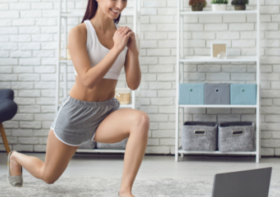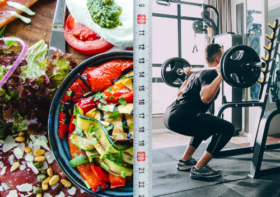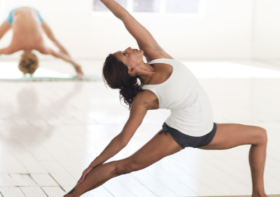Adult Ballet – The Fundamentals


Ballet is an art form that can be practiced by everybody, which makes it an attractive workout to all age groups and body types. Adult ballet classes allow adults to learn in a non-judgmental environment and create a welcoming culture for those who always have been dancing, never left or just started.
If you are thinking about joining an adult ballet class–perhaps after reading this article, you’ll be motivated to make the first step.
1) IT STARTS IN YOUR MIND
Starting with ballet inspired workouts or traditional classes at a later age can be very intimidating and overwhelming at first. Many movements are hard to learn and seem unnatural, but improvement comes with time. Don’t compare yourself to other students, but use them as a motivation to practice harder. There is always going to be someone in class who is naturally very bendy, can lift their leg higher or is more advanced in following step sequences. Aiming for perfection won’t help you. Remember why you want to dance and acknowledge your effort every time you show up for class.
2) STRETCHING IS KEY
If you join any ballet class with no prior warm-up or stretching, you can do some serious damage to your body. According to the Journal of Athletic Training (2013) the most common injuries of dancers affect their backs, knees, ankles and feet.1 Most of us are not used to turned out feet or pointed toes. Mild stretches and breathing exercises will allow your body to prepare for the physical demands of the class. Do you want to learn more about how you can benefit from stretching? Follow this link.
3) START SLOW
We recommend arriving early, always. You will have time to familiarize yourself with the studio and to warm up. Beginners should stand in the middle of the barre so they can watch other students while practicing. Start with slow barre exercises such as pliés (knee bends), tendus (stretched leg and pointed foot) and rondes de jambes (circular movements of the leg). This will allow you to coordinate a series of movements before you move on to center work with jumps and turns.
4) YES, IT’S GOING TO BE HARD
Ballet is a total body workout. Your muscular strength will build up over time, and this comes with a degree of fatigue and discomfort. Make sure you listen carefully to what your teacher explains because they speak from experience. Turn out comes from the hips, not the knees. Strengthen your ankles before you start pointe work and don’t push beyond pain. These are just examples for a longer dance life.

First and foremost, adult ballet workouts should bring you joy. At a certain age, the chances of becoming a professional dancer are small and there will be no pressure to train to perfection. Dancing challenges your brain and is an excellent mental exercise to stay focused. It also helps to reduce stress and leaves you with an overall boost of self-esteem, not forgetting those beautiful, toned calves we are aiming for. Set small goals with every class and work towards them. If it’s your dream to dance in pointe shoes one day, go for it.
Always remember, the more consistent you are, the more confident you will become. One plié at the time.
Written by Jenny Clucas





